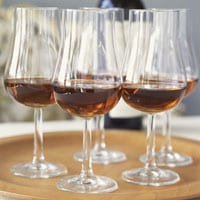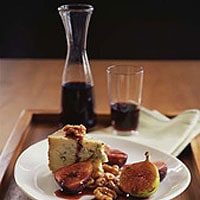Like sherry, port is a fortified wine; in this case, the wine is boosted with brandy. High in alcohol content, port is best enjoyed in small, leisurely sips.
Flavors and Aromas

The more you delve into the world of port, the more you'll love getting to know the styles available. If you're new to the world of port, keep these varieties in mind:
- Ruby ports are red, young, and fruity; they get their name from their seductive ruby-red color.
- Tawny ports have a tawny hue and are lighter and softer in taste than ruby ports.
- Vintage ports are made from the grapes harvested in a particularly good year. These rare beauties are often aged much longer than ruby or tawny ports—some, in fact can age 50 years or more. They're known for their intense flavors and colors, and they come with high price tags.
Prominent Plantings
While ports are made the world over, it originally hails from northern Portugal, where it is made from grapes grown near the city of Oporto—where port gets its name.
Pairing with Food

Port is often served at cool room temperature and enjoyed after dinner to encourage conversation and relaxation.
Port tastes sublime served with Stilton cheese or other blue cheeses, plus hazelnuts and walnuts—foods that help bring out the flavors in your glass.
Insider Tip
While port generally is served at room temperature as an after-dinner drink, in summer it can be pleasant when chilled and served as an apéritif.

 You are about to leave publix.com and enter the Instacart site that they operate and control. Publix’s delivery and curbside pickup item prices are higher than item prices in physical store locations. Prices are based on data collected in store and are subject to delays and errors. Fees, tips & taxes may apply. Subject to terms & availability. Publix Liquors orders cannot be combined with grocery delivery. Drink Responsibly. Be 21. For prescription delivery, log in to your pharmacy account by using the Publix Pharmacy app or visiting
You are about to leave publix.com and enter the Instacart site that they operate and control. Publix’s delivery and curbside pickup item prices are higher than item prices in physical store locations. Prices are based on data collected in store and are subject to delays and errors. Fees, tips & taxes may apply. Subject to terms & availability. Publix Liquors orders cannot be combined with grocery delivery. Drink Responsibly. Be 21. For prescription delivery, log in to your pharmacy account by using the Publix Pharmacy app or visiting 
